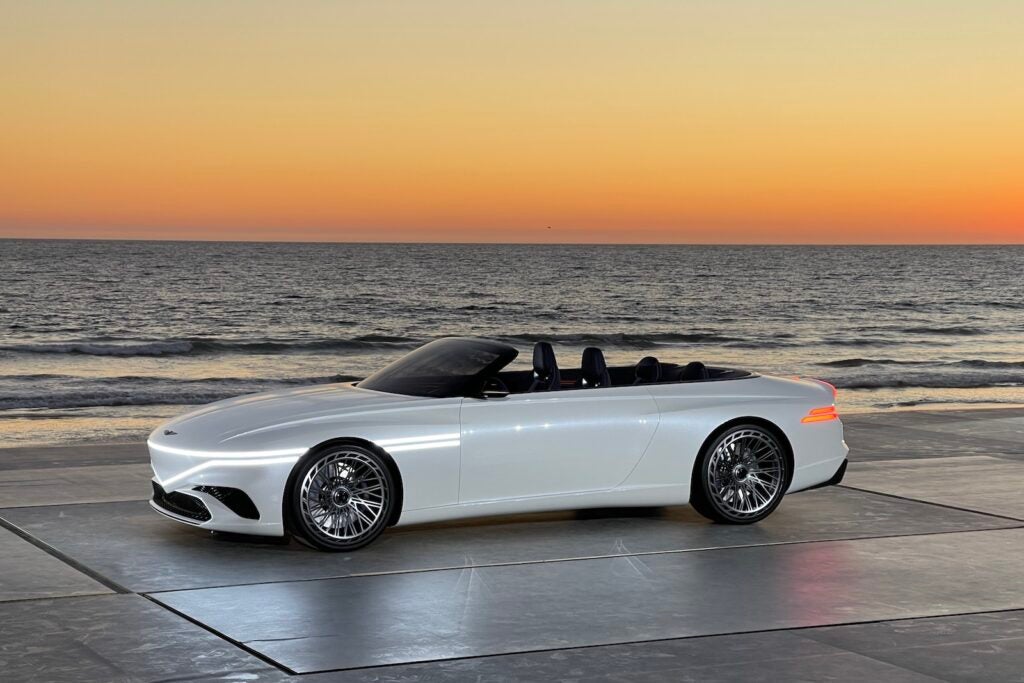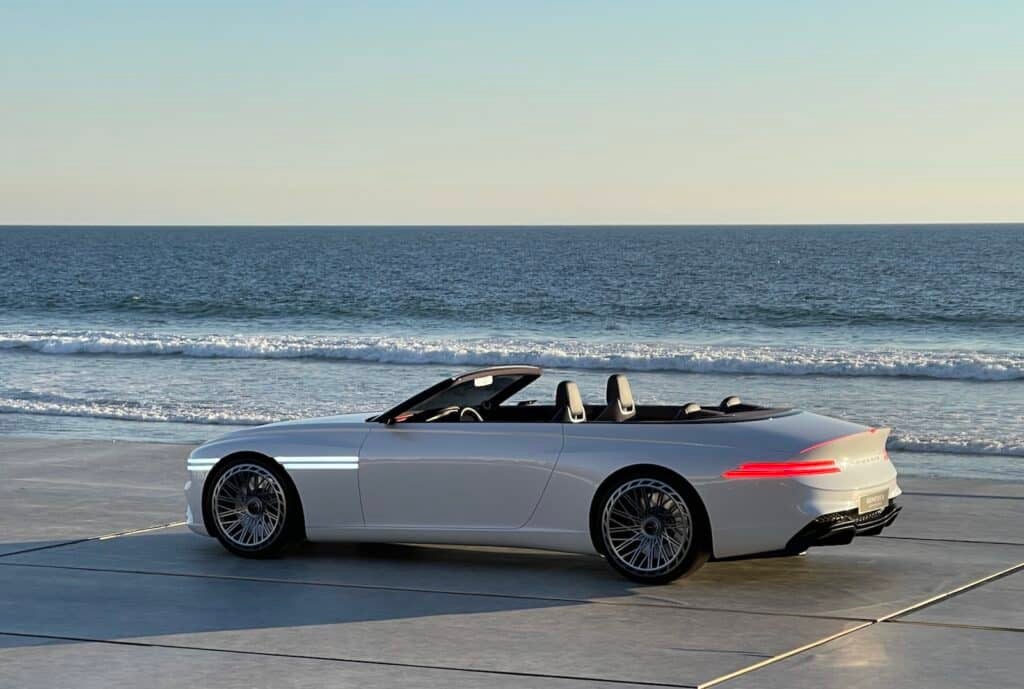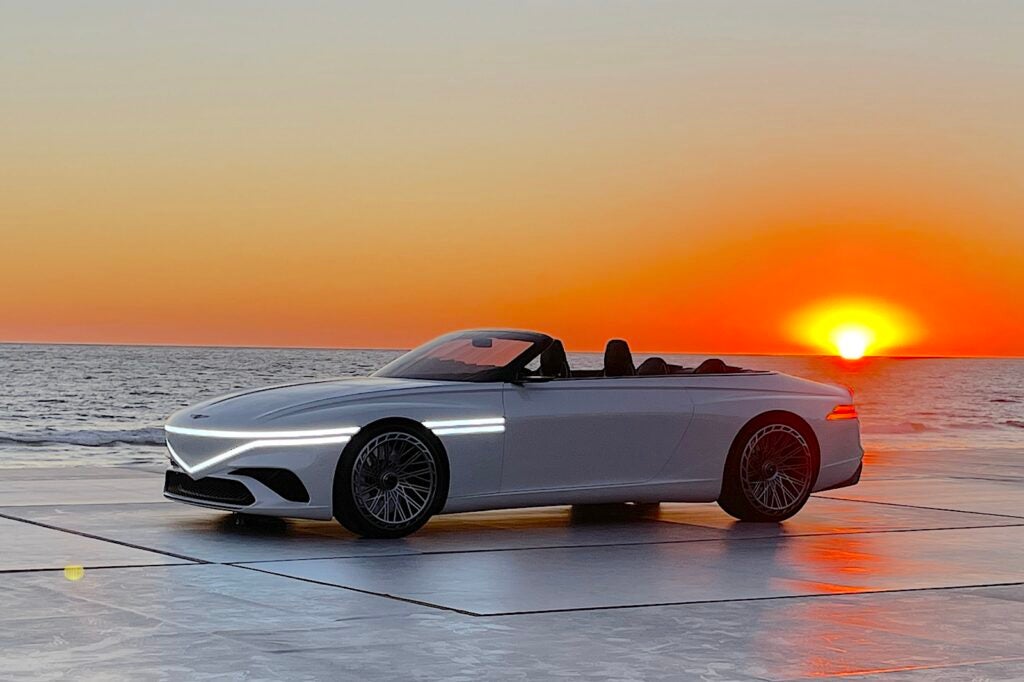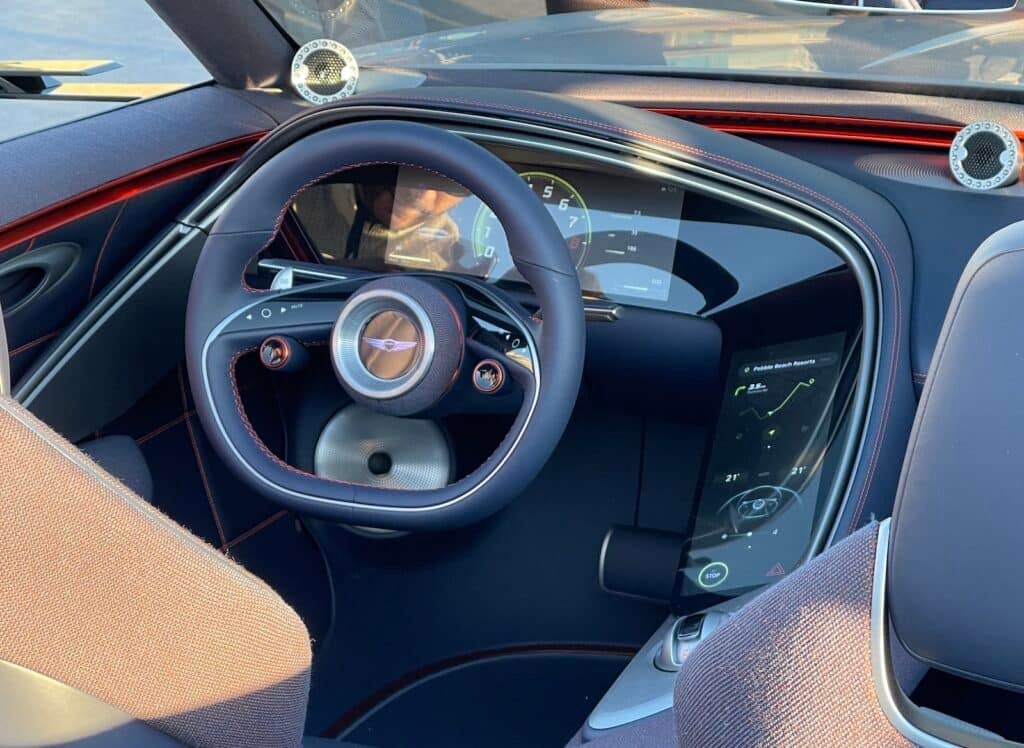With plans to go all-electric later this decade, Genesis has rolled out three new battery-powered models this year. And it offered up a hint of what could follow Tuesday evening with the debut of the Genesis X Convertible.

Officially, the Genesis X is just a concept vehicle — much like the X Speedium Coupe revealed in April. It’s meant to “inject more adrenaline into the brand,” Luc Donckerwolke, the chief creative officer for Hyundai Motor Group, said following the prototype’s debut along the Malibu coast.
That said, “I’m not doing show cars just to do show cars,” Dockerwolke told TheDetroitBureau.com.
“We’ve had a lot of interest shown for this car and hundreds of requests to build it,” he added. “I’m putting a huge amount of energy into making this possible.”
Korean aesthetics
Genesis officials offered only a modest amount of information about the X Convertible, noting that it uses a folding hardtop, rather than a fabric roof. That allowed designers to integrate a see-through moonroof over the front passengers.

The concept picks up on the distinctive, double-deck strip lights found in Genesis production models, such as the new Electrified GV70 crossover set to go on sale next month — though the lower light bar dips to form a distinctive “V” up front. The rear integrates a concave ducktail which, like other elements of the design, is meant to reduce aerodynamic drag.
The interior reflects what the automaker calls “Korean aesthetic nuances … inspired in part by traditional Korean roof architecture.” But don’t think that means a musty old design. This is a decidedly driver-oriented layout, with digital instrumentation and a touchscreen that flows off the center stack and into the center console.
All-electric
Like the X Speedium before it, the X Convertible is battery-powered — or it would be if put into production. Donckerwalke noted, as a concept vehicle, it doesn’t feature a running drivetrain.

But as Genesis officials explore ways to actually build the hardtop convertible they’re now looking at opportunities that could include using some of the battery-electric technology now powering models like the GV60 SUV, as well as the “Electrified” versions of the GV70 crossover and G80 sedan. In fact, if the vehicle were to move to production, it would likely employ manufacturing techniques not used by Genesis/Hyundai before.
“It is not (likely to get) supercar performance,” he said. “It is adequate performance.”
Plenty to work out
A lot of other details would need to be worked out, as well, the executive said. That starts with the underlying platform. The battery versions of the G80 and GV70 share the same “architecture” as the gas models. The GV60, however, uses a newer, skateboard-like architecture where battery packs and motors are mounted below the load floor.
It’s the same approach now taken by most manufacturers, from Tesla to General Motors to Volkswagen. The E-GMP platform, in this case, is shared by the Hyundai and Kia brands, as well as Genesis.

But Donckerwolke said there are other options under study. And if the X Convertible goes into production it could use an even more advanced architecture designed not only to be more flexible but also to simplify — and reduce the cost of — production.
Revolutionizing the manufacturing process
One approach under consideration, the executive said in an exclusive conversation, would see it use large scale castings for large portions of the vehicle, rather than welding together individual stampings.
This approach — which was pioneered by Tesla — would eliminate scores of individual parts and substantially reduce the amount of work needed to assemble the vehicle. In Tesla’s case, that has translated into substantially lower production costs and much higher profit margins.
But that is just one of several possibilities, said Donckerwolke, adding what is critical is that “We are looking into different ways of producing cars.”
As for timing, if the X Convertible gets the go — a big “if” right now — it will take at least two years or more to get it ready for mass production, though Donckerwolke said he definitely wouldn’t want to see this stretch out as long as five years.
- Coinsmart. Europe’s Best Bitcoin and Crypto Exchange.Click Here
- Platoblockchain. Web3 Metaverse Intelligence. Knowledge Amplified. Access Here.
- Source: https://www.thedetroitbureau.com/2022/11/genesis-x-convertible-concept-could-wind-up-in-production/



